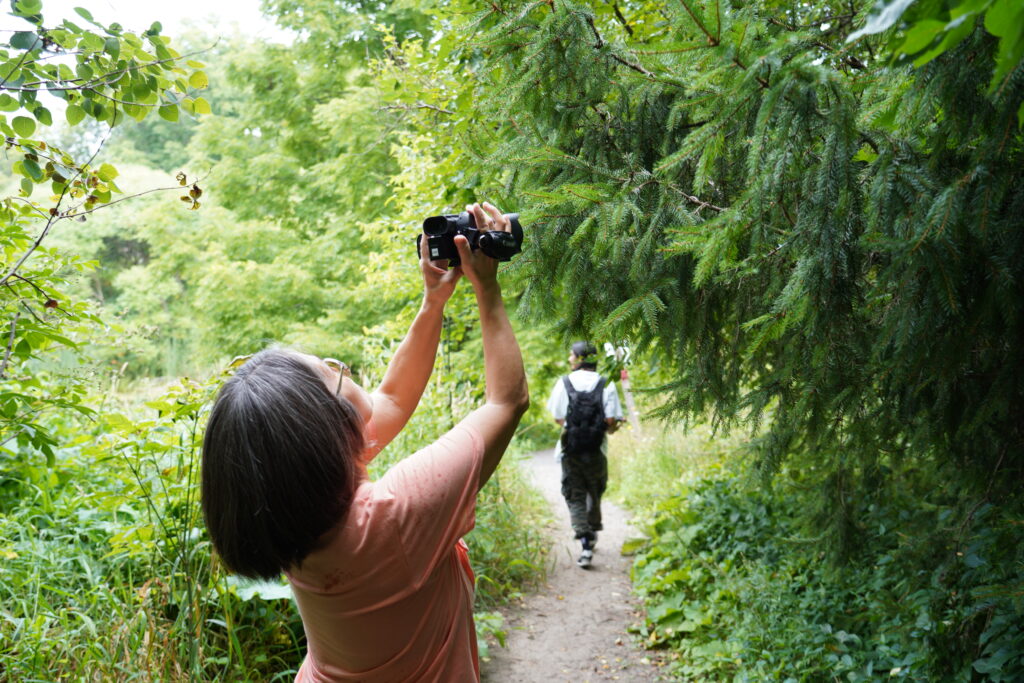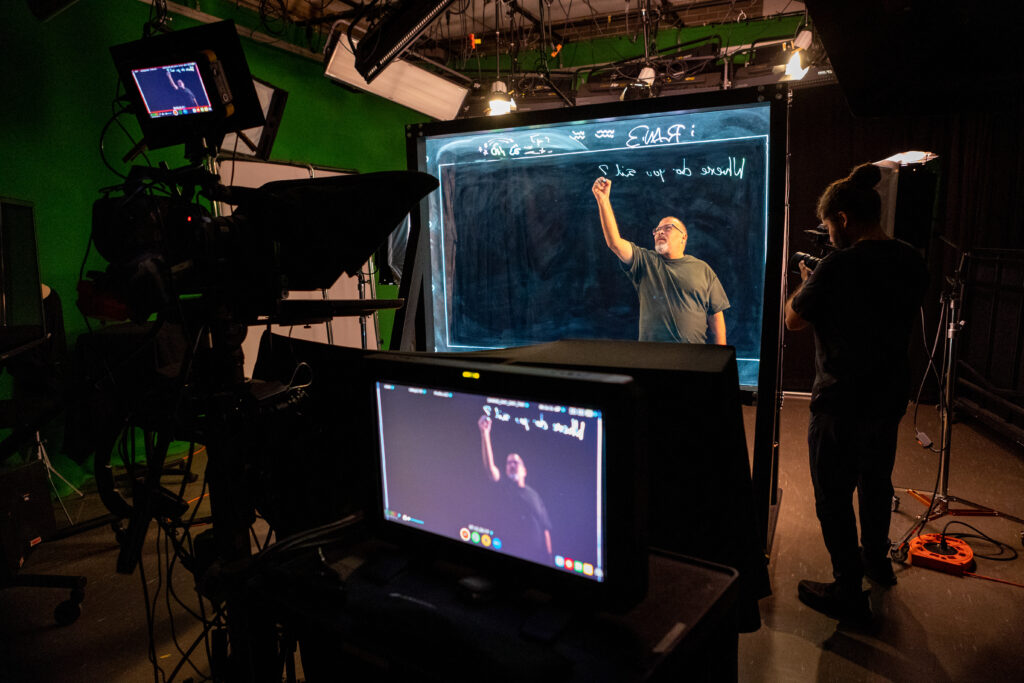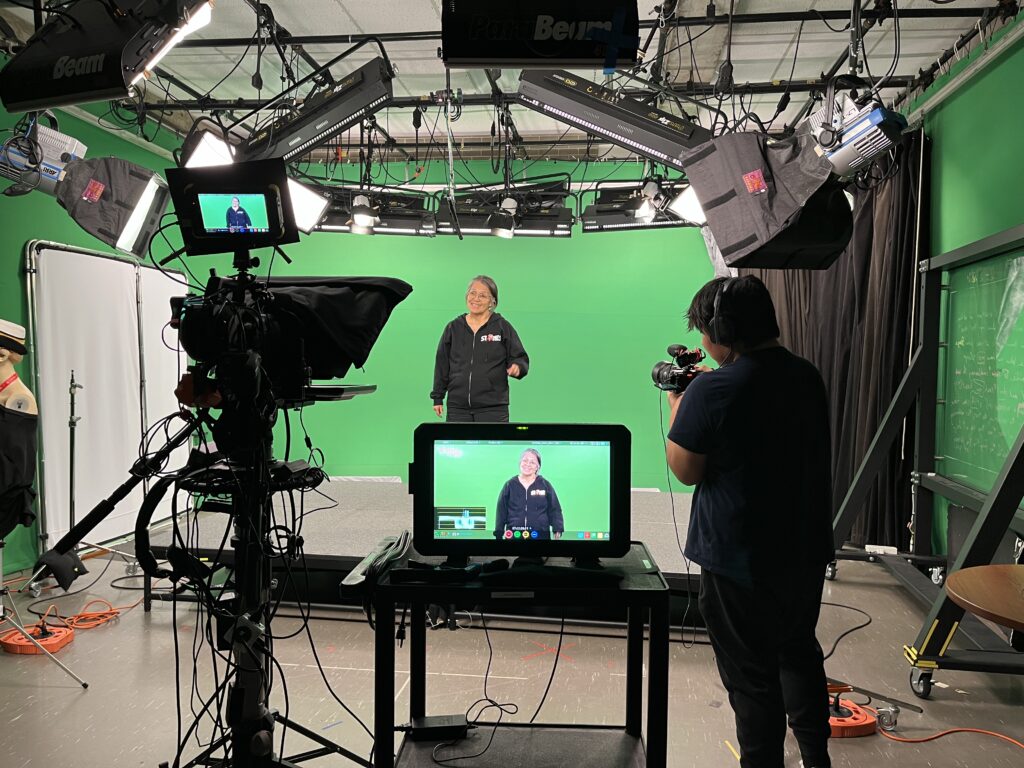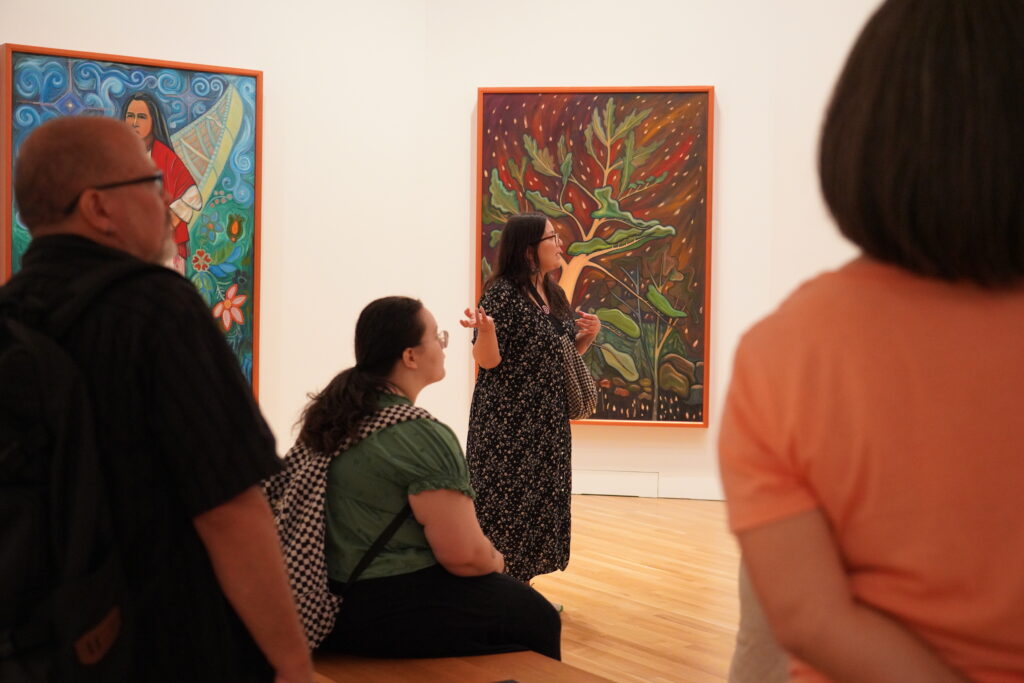Indigenous Artists Get Hands-On Experience Through Carleton Media-Making Institute
By Emily Putnam
For Danielle Vandale, the opportunity to participate in the CU Indigenous Media-making Summer Institute was a breath of fresh air.
“It was a space where I could not only get away from the day-to-day hustle and immerse myself in my art, but also learn new ways of expressing that art,” says Vandale, a filmmaker and member of the Métis Nation of Saskatchewan.
“My favourite parts were the group discussions regarding certain pieces of artwork, film or stories — it was like talking to a room of people who spoke the language of my own soul. That is hard to find.”
Vandale earned The Fondation Famille Kenny Tang’s Impact Bursary for her poignant and visually captivating documentary Is That My Mama?, which explores themes of trauma, healing, and identity.

She says the institute helped arm her with film industry knowledge and shed light on some of the opportunities available for Indigenous artists.
“It gave me a different perspective on how to curate and promote my artwork to make a difference in my community.”
From July 30 to August 10, six Indigenous artists from across Turtle Island gained hands-on experience at the second annual Indigenous media-making gathering at Carleton.
Supported by Wapikoni Mobile, a Montreal-based non-profit that raises awareness about Indigenous cultures and issues through art, the institute’s main objective is to foster safe university and community spaces for emerging Indigenous artists to acquire new skills in media-making, generate original artworks, experience a range of culturally relevant activities, and make contacts in academic and arts communities.

Participants are offered seminars by experts in their field, equipment training, and skill development. During daily workshop sessions and seminars, they can hone their cinematography, sound recording and design, and editing skills.
Piloted by Carleton Film Studies professor Kester Dyer, the institute accepts between six and nine participants annually. Beyond the daily sessions, this year included tours of the National Gallery of Canada and conversations with Indigenous faculty member Duncan McCue.
TLS Media Production supplied the spaces and equipment where the workshops took place, and their staff, Hasi Eldib and Greg Allison, were the primary instructors.
The idea for the institute arose when Dyer was involved in a partnership with Wapikoni as a PhD student at Concordia University.
“I was impressed with the kind of impact Wapikoni had achieved. While the traditional scholarly output that I had been working on was interesting and useful, I felt that parallel activities directly engaging in co-creation projects could lead to more tangible collective forms of knowledge for university professors, students, and staff, as well as collaborating artists and Wapikoni filmmakers.”

Carleton’s connections enabled Dyer to offer activities that complemented the media-making workshops. Local organizations like Ottawa’s Digital Arts Resource Centre (DARC) and the Canadian Museum of History’s Indigenous Language Advisor, Gaëlle Mollen, were among the featured guests.
Gabrielle Brochu, a second year student in the Master’s of Arts, Music and Culture program at Carleton and Wolastoqey artist, served as a student researcher at the institute.
“Stories are a cornerstone of so many Indigenous cultures across Turtle Island, and so filmmaking offers Indigenous artists a medium through which to share their own stories with both Indigenous and non-Indigenous kin,” says Brochu. “The importance of this cannot be understated, as it offers Indigenous artists a way to express their voices and to amplify them.”
Brochu participated in grant writing for the institute and interacted with the participants daily, guiding them around campus and getting updates on their projects.
Participants became familiar with campus life and took part in several exchanges, including visits to Carleton’s Ojigkwanong Centre. They also attended the Asinabka Festival, where they could network with Indigenous filmmakers from around the world.

The institute has featured established Indigenous guest artists like Sonia Bonspille Boileau, Jason Brennan, and Shelley Niro.
Niro’s exhibition The 500 Year Itch was on at the National Gallery at the same time as the institute. Danielle Printup, an Indigenous curator at the Carleton University Art Gallery (CUAG), did a guided tour of the exhibition and invited Niro to meet the participants.
“By creating spaces for emerging Indigenous artists at Carleton, I hope our project will contribute to ongoing reflections that prompt us as an institution to listen and concretely adapt to the imperatives of decolonization as expressed by Indigenous peoples seeking opportunities in academia,” says Dyer.
Looking ahead, Dyer hopes the institute will expand across disciplines. He would also like to form other community partnerships to respond to community members’ specific needs and aspirations, whether in terms of artistic creation, linguistic or cultural revitalization, or pedagogical endeavours.
“I hope that our institute reinforces the notion that the knowledge acquired through degrees in Film Studies and other disciplines can be applied in several different intersecting ways – and that as media scholars, it can be rewarding to work closely alongside the artists whose work we study and try to understand, and that we can also play a part in generating the spaces where this work is created.”